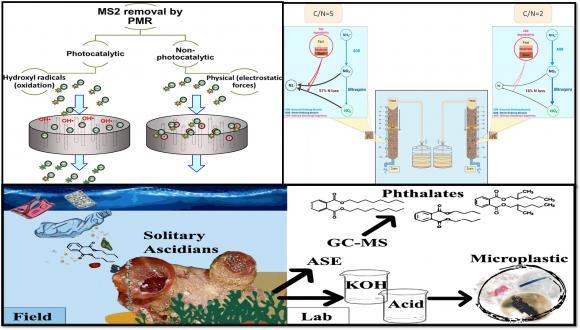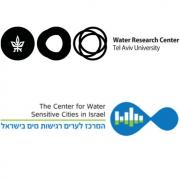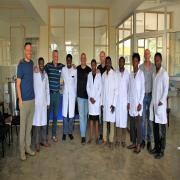New publications 2018
New publications by the WRC researchers
Just before 2018 was endedd, three new papers were pubished by the WRC-TAU researches.
Lead by Ph.D student Liron Friedman, a research on "The role of influent organic carbon-to-nitrogen (COD/N) ratio in removal rates and shaping microbial ecology in soil aquifer treatment (SAT)" was published on Water Research,Volume 146, 1 December 2018, Pages 197-205.
Some of the research highlights are:
• Higher C/N ratio in the feed resulted in significantly higher N loss.
• The genus Nitrospira showed preponderance over the genus Nitrobacter and AOB.
• Nitrospira correlated to ammonia removal show complete ammonia oxidation activity.
• At top high C/N column microbial community reflected potential for denitrification.
• Niche differentiation within the biofilm is significant in anoxic activity at SAT.
Click here for the full article
Ph.D student Inna Horovitz lead her research on "MS2 bacteriophage inactivation using a N-doped TiO2-coated photocatalytic membrane reactor: Influence of water-quality parameters" that was published on Chemical Engineering Journal, Volume 354, 15 December 2018, Pages 995-1006.
Highlights from the research are:
• Photocatalytic Al2O3 membrane was found efficient for virus removal.
• MS2 removal by PMR was strongly affected by water quality.
• Alkaline pH and NOM were main inhibitors to MS2 removal by PMR.
• Calcium increased MS2 removal through charge-neutralization or cation-bridging.
Click here to the full article
A collaboration study between the Hydrochemistry group and the TAU Zoological department was lead by M.Sc. students Aviv Kaplan and Gal Vered on "Using solitary ascidians to assess microplastic and phthalate plasticizers pollution among marine biota: A case study of the Eastern Mediterranean and Red Sea". The results of the research were published on Marine Pollution Bulletin, Volume 138, January 2019, Pages 618-625.
Highlights from the study:
• First investigation of microplastic and phthalates in solitary ascidians.
• First report on phthalates in biota of the Eastern Mediterranean and the Red Sea.
• Phthalate levels up to 6 μg/g dw DBP and up to 13 μg/g dw DEHP.
• Microplastic fragments of 50–540 μm were detected in ascidians from all sites.





